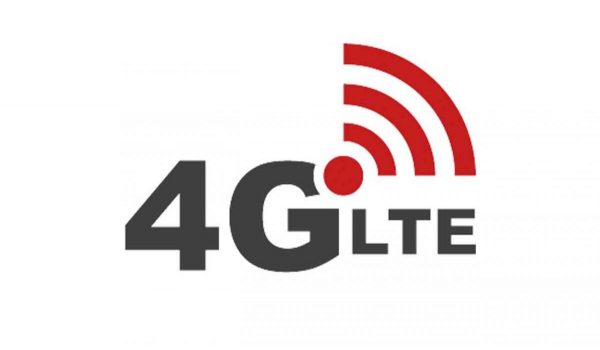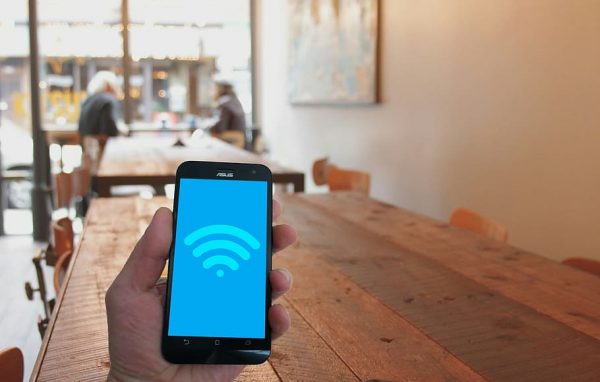A phone call is the easiest way to get in touch with our loved ones. We can easily ring up friends and family when we miss them. But there can also be some struggles when calling someone. Choppy and broken calls are some of the things that can go wrong and we don’t want to fuss ourselves over them. We all get exhausted from saying “hello” again and again just to confirm if the person from the other line can hear us. The good thing is, there is a solution for that—the VoLTE. Our calls will never be the same again, thanks to this new innovation in cellular technology.
What Is VoLTE?

VoLTE stands for Voice over Long Term Evolution. It is intended to replace the current call technology that we have now. With the current technology, calls are transmitted to a separate channel, resulting in a speed downgrade of your internet connection whenever you make a call. VoLTE aims to be the catalyst for voice call technology today.
VoLTE is a notable edge of 4G vs. 3G. You may have heard of the term LTE or Long Term Evolution, which is usually associated with 4G Broadband Internet. LTE is the measure for internet speed back when 3G is moving towards 4G. It was the predecessor of 4G so, LTE is slower for it was only a temporary technical standard of 4G Internet until true 4G speeds were reached.
The LTE technology was not initially intended for daily voice calls, but a push from major telecom companies around the world made VoLTE possible. VoLTE services commercially rolled out in 2012, which made it the gold standard of voice calling. The main objective of this is to make all our voice calls relayed to VoIP or “Voice over Internet Protocol.” VoLTE and Wi-Fi calling are examples of VoIP services.
How Does VoLTE Work?
What VoLTE does is to carry your calls to an LTE network. Instead of legacy voice networks, it transmits data over the Internet, resulting in clearer calls. LTE has a higher bandwidth so it can handle not just audio calls but also video calls. With this in mind, VoLTE is an additional Internet service that carriers provide without charging any extra fees to you.
Unlike the previous technology, where you may notice a steep decline in your internet speed during a call, VoLTE lets you browse the Internet seamlessly while still maintaining a high-definition call. Some carriers call this service HD voice. Nevertheless, the concept of VoLTE is essentially the same which is to you a hassle-free audio call experience like never before.
What Phones Support VoLTE?

Most of the phones today are VoLTE-ready. Some old phones that are capable of 4G have VoLTE functionality in it. Therefore, you don’t really need to change your phone if you want to avail of this new service. Even phones released in 2014 like the iPhone 5S, Samsung Galaxy S4, Galaxy Note 2 LTE, and Moto X can do 4G calls.
If you are not sure if your phone is VoLTE-capable, you may ask your carrier if your phone model has this voice call technology. If you’re on a hunt for an upgrade, now is the right time to choose the right phone for you, so you can elevate your everyday call experience. On the bright side, you do not need to shell out tons of money to upgrade your phone. For starters, you can buy a decent VoLTE-capable phone for $100-$250.
Usually, VoLTE automatically turns on if you’re in the middle of a call. However, you may notice that the clarity of your calls will still be the same old grainy calls, for some phones will not let you simply turn this feature on. There are different ways to turn on VoLTE on different phones. On the iPhone, you can turn this on by going to Settings>Cellular>Cellular Data Options, then select “LTE.” On some Android phones, this setting is usually found on the “Connections” or “Wi-Fi/mobile network” option.
Which Networks Offer VoLTE?
Currently, all of the major carriers like Sprint, T-Mobile, Verizon, and AT&T have VoLTE services. Minor and prepaid carriers are also following suit on the rollout of VoLTE. Better prepare yourself to change that old phone for most of the carriers are planning to shut down their 2G and 3G services in the coming years. Verizon has shut down their 2G services last December 2019 and plans its 3G shutdown this coming December 2020. T-Mobile and Sprint are reportedly shutting down their 3G services as well by 2021. So if you are subscribed to them, better upgrade your phone if it is still not 4G-capable.
US Cellular has recently implemented its “Enhanced Calling” feature, which is their version of VoLTE. If you’re on a tight budget, you can still save up so you can buy a phone that’s VoLTE-equipped so you would not get behind the trend. Then again, the good news is you do not need to buy an uber-expensive phone to get VoLTE.
VoLTE vs Wi-Fi Calling: What Is the Difference Anyway?

VoLTE and Wi-Fi Calling are both VoIPs. As mentioned above, VoIP or “Voice over Internet Protocol” carries your voice calls to the Internet. They both provide higher quality calls and simultaneous Internet access and voice calls. They also enable you to connect faster on your calls.
But there is a key difference in how VoLTE and Wi-Fi calling works. Wi-Fi calling works when you are connected to a Wi-Fi source. It enables you to call even in areas with a poor cellular signal. On the other hand, VoLTE relies on LTE networks, which is a type of cellular connection. There’s a quick way to check the network coverage in your area. If your area is not yet covered by LTE or 4G, then you won’t get this feature too.
What’s good about Wi-Fi calling is that it enables you to call whenever you are connected to a Wi-Fi hotspot. Whether you’re in a basement or a deserted town, as long as you are connected to a Wi-Fi hotspot, you can make a high-quality call to anyone wherever and whenever. But once you get out of the Wi-Fi hotspot, your calls may go back to that choppy, muffled, and rugged voice you usually hear in a typical call.
The good news is, VoLTE can save the day. If ever you’re cut off from Wi-Fi, your LTE connection will continue to transmit that call, provided that you are covered by an LTE tower. In cases of low reception, there are ways to boost your mobile coverage so you won’t get cut off from VoLTE.
What Are the Benefits of VoLTE?

With the continuing rollout of VoLTE all around the US, it surely gives the benefits that can elevate our daily call experience. Here are the benefits of having VoLTE in your calls.
No Additional Call Charges
Even though VoLTE carries calls like how you transmit data on the Internet, it does not charge you extra on your calls. Carriers will still charge you per minute on your monthly bill, so you don’t have to worry about bill shocks. There’s no more need to call through a third-party app if you want higher quality calls. Just go ahead and call your loved ones.
Video and Group Calls Without Third-Party Apps
You don’t need to open Skype or Messenger anymore. With VoLTE, video calls are now possible without using any other video messaging apps. With its higher bandwidth, it can make video calls without using the Internet. You won’t only hear your loved ones on the other line but also see how are they doing.
Although it is still in its infancy, group or conference calls can also be possible. Ideally speaking, VoLTE technology can handle up to six persons, provided that they are all connected through Wi-Fi or VoLTE. As of now, there are no carriers that offer this service, but we are all hoping that this will be possible in the future.
Better Call Quality
Since VoLTE allows more bandwidth for calls, it provides for higher quality calls than the legacy technology. You may notice that the audio quality on both ends is clearer and makes you connect to the other person quicker. Disconnections are also rare, thanks to its faster end-to-end connection.
Ability to Browse the Web While in a Call
Once you are in a call, your ability to surf the Internet is limited because you will be forced to revert back to 3G technology, resulting in a slower Internet connection. But you don’t have to worry about that anymore; VoLTE lets you browse the Internet while still maintaining that high-quality call. You can watch some funny YouTube shorts while in the midst of a VoIP call. Or maybe, you want to check out some tweets of your favorite artist. As long as you are connected to a 4G network, your call will not be interrupted and your Internet will not bog down.
What Are the Disadvantages of VoLTE?

With this latest innovation in technology, it is not without hiccups. Here are some things that need to be improved with VoLTE.
Additional Data Charges Are Possible
While it can possibly handle video calls and group calls, some networks will still charge you on your data usage, especially if you are doing video calls. Verizon, for instance, charges your data consumption whenever you make a video call using VoLTE. An average one-minute call will consume 6-8 MB of data. So watch out for your data usage if you are using VoLTE for your video calls. If you need to do video calls, better connect to Wi-Fi and use video conferencing apps instead.
Calls Over Wi-Fi Are Still More Reliable
Though most of the carriers are now catering VoLTE, some areas still have limited coverage of this technology. Since VoLTE is still being rolled out today, expect your calls to be a little bit unstable for now. Since Wi-Fi technology is more widely used, Wi-Fi calling has wider and better coverage than VoLTE. So, if you want consistently clear voice calls, better stick with Wi-Fi calling, or use third-party apps like Messenger or WhatsApp.
Not All Phones Are VoLTE-Ready… for Now
Yes, you may have a VoLTE-capable phone, but the people you want to call may not have such a feature on their phone. So, you will still be stuck with that traditional call you were used to.
Roaming Is Not Possible in Some Countries
If you are a frequent traveler, there are chances that you might not get VoLTE in countries you are traveling into. Better check with your carrier if VoLTE can be used in other countries. Alternatively, you can use third-party messaging apps like Messenger, Zoom, and Skype, or use Wi-Fi calling if you want those crystal clear calls.
VoLTE Is the Future
As time passes by, technology becomes more advance and even our staple calls will change. Of course, we want to hear our loved ones or colleagues clearly, so having VoLTE is a great advantage for us. We should not let ourselves get behind this trend. VoLTE truly revolutionizes the way we connect to the world, one call at a time.
Not sure if you are covered by LTE? Here’s how to locate a cell tower map near you.
